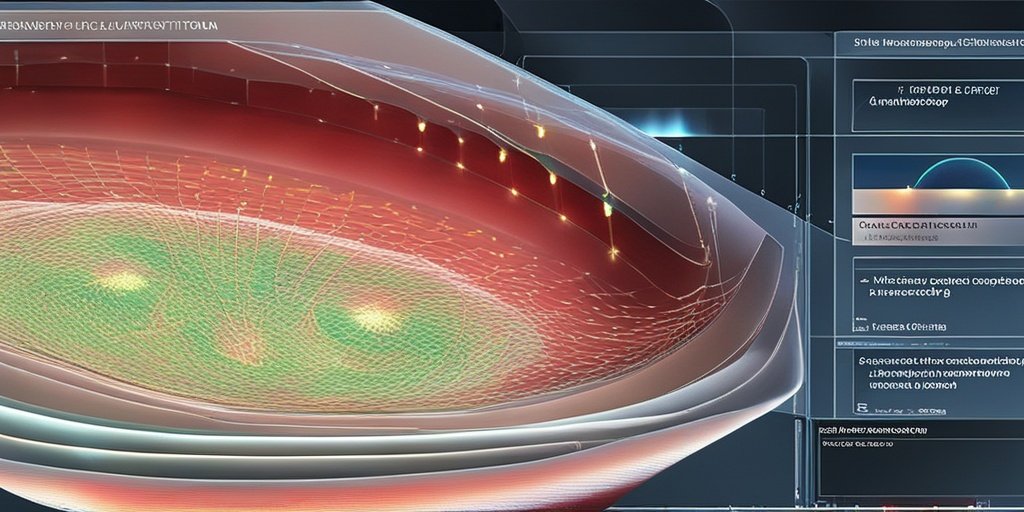⚡ Quick Summary
This study utilized machine learning to analyze the residual visual field (VF) deficits and macular retinal ganglion cell (RGC) thickness loss patterns in patients who have recovered from optic neuritis (ON). The findings revealed that most ON eyes exhibited a 10-2 VF recovery despite significant GCIPL thinning, indicating potential compensatory mechanisms for vision.
🔍 Key Details
- 📊 Dataset: 377 same-day pairings of 10-2 VF and OCT macula images from 93 ON eyes and 70 normal fellow eyes
- 🧩 Features used: Visual fields and retinal thickness measurements
- ⚙️ Technology: Archetypal analysis (AA)
- 🏆 Key findings: 80% of ON eyes had a normal VF archetype despite GCIPL thinning
🔑 Key Takeaways
- 🔍 Machine learning was effectively applied to assess visual field and retinal thickness in ON patients.
- 📉 Most ON eyes showed a normal VF pattern, indicating a potential recovery.
- 🧠 Significant thinning of the GCIPL was observed in ON eyes.
- 📈 Correlations were found between normal archetype weights and OCT measurements.
- 🌟 Compensatory mechanisms may play a role in visual recovery despite structural changes.
- 🔬 Study conducted on patients ≥90 days post-acute ON.
- 📅 Published in: Sci Rep, 2024.

📚 Background
Optic neuritis (ON) is an inflammatory condition affecting the optic nerve, often leading to visual impairment. Understanding the long-term effects of ON on visual fields and retinal structures is crucial for developing effective rehabilitation strategies. Recent advancements in machine learning provide new avenues for analyzing complex data sets, allowing researchers to uncover patterns that may not be evident through traditional methods.
🗒️ Study
The study involved a comprehensive analysis of visual field and retinal thickness data from patients who had recovered from ON. By employing archetypal analysis (AA), researchers aimed to identify distinct patterns in the data that correlate with visual recovery. The analysis included 377 pairs of visual field tests and optical coherence tomography (OCT) images, providing a robust dataset for evaluation.
📈 Results
The results indicated that a significant majority of ON eyes (80%) exhibited a normal visual field archetype, despite the presence of GCIPL thinning. The study identified a total of 7 visual field archetypes and 11 retinal thickness archetypes, highlighting the complexity of visual recovery post-ON. Notably, the correlation coefficients for normal archetype weights with OCT measurements were significant, suggesting a relationship between visual field recovery and retinal structure.
🌍 Impact and Implications
The implications of this study are profound, as they suggest that even with structural changes in the retina, patients can achieve a level of visual recovery. This finding opens up new discussions about the underlying compensatory mechanisms that may facilitate vision restoration. Understanding these mechanisms could lead to improved therapeutic strategies for patients recovering from ON and similar conditions.
🔮 Conclusion
This research highlights the potential of machine learning in enhancing our understanding of visual recovery in optic neuritis patients. The ability to identify patterns in complex data sets not only aids in clinical assessments but also paves the way for future studies aimed at optimizing rehabilitation strategies. Continued exploration in this field is essential for advancing patient care and outcomes.
💬 Your comments
What are your thoughts on the findings of this study regarding visual recovery in optic neuritis? We invite you to share your insights and engage in a discussion! 💬 Leave your comments below or connect with us on social media:
Macular patterns of neuronal and visual field loss in recovered optic neuritis identified by machine learning.
Abstract
We used machine learning to investigate the residual visual field (VF) deficits and macula retinal ganglion cell (RGC) thickness loss patterns in recovered optic neuritis (ON). We applied archetypal analysis (AA) to 377 same-day pairings of 10-2 VF and optical coherence tomography (OCT) macula images from 93 ON eyes and 70 normal fellow eyes ≥ 90 days after acute ON. We correlated archetype (AT) weights (total weight = 100%) of VFs and total retinal thickness (TRT), inner retinal thickness (IRT), and macular ganglion cell-inner plexiform layer (GCIPL) thickness. AA showed most ON eyes had a 10-2 VF pattern like the normal fellow eye VF, despite having markedly thinner GCIPL patterns. AA identified 7 VF and 11 retinal thickness ATs for each OCT model. The normal VF AT constituted 80% of ON eyes and 90% of normal fellow eyes. The most common GCIPL AT consisted of diffuse thinning. We identified significant correlations for the normal AT weights using OCT AT weights of five GCIPL ATs (r = 0.45), four TRT ATs (0.53) and two IRT ATs (0.42). Following acute ON, most eyes had complete 10-2 VF recovery despite significant GCIPL thinning, suggesting compensatory mechanisms for vision.
Author: [‘Szanto D’, ‘Wang JK’, ‘Woods B’, ‘Elze T’, ‘Garvin MK’, ‘Pasquale LR’, ‘Kardon RH’, ‘Branco J’, ‘Kupersmith MJ’]
Journal: Sci Rep
Citation: Szanto D, et al. Macular patterns of neuronal and visual field loss in recovered optic neuritis identified by machine learning. Macular patterns of neuronal and visual field loss in recovered optic neuritis identified by machine learning. 2024; 14:30935. doi: 10.1038/s41598-024-81835-8